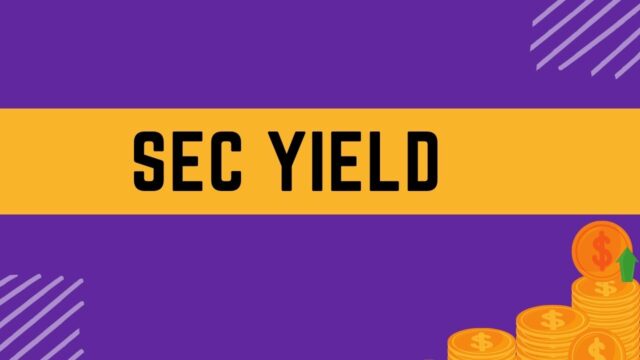
What is sec yield
Before discussing what sec yield is, let’s review some basics. A bond is a debt investment in which an investor loans money to an entity (usually governmental) for a defined period of time. The entity pays the investor periodic interest payments, called coupons, and returns the loan amount at maturity. The periodic interest payments are a percentage of the par value, which is the face value of the bond at issuance. Now that we have reviewed some basics, let’s discuss sec yield. The sec yield is simply the yield of a bond calculated using its most recent price. The most recent price may not be the same as the face value or par value, so the sec yield takes this into account. The calculation also takes into account any coupon payments that have been made since the bond was issued.
Why should you care about sec yield?
Well, if you are looking to invest in bonds, the sec yield can give you a good indication of how much return you can expect on your investment. It is also a good way to compare bonds of different denominations and different maturities. So, if you are considering investing in bonds, be sure to check out the sec yield!
How to calculate sec yield
There are a few different ways to calculate the current yield of a bond. One common method is to take the coupon rate of the bond and divide it by the price of the bond. For example, if a bond has a coupon rate of 5% and is currently selling for $1,000, the current yield would be 0.05/1,000, or 0.005.
Another method is to take the interest payments made over the course of one year and divide that by the price of the bond. Using the same example as above, if the bond makes interest payments of $50 per year, the current yield would be 0.05. It is also important to keep in mind that the current yield only provides a snapshot of what an investor can expect to earn in interest payments. It does not take into account the fact that bonds typically make periodic interest payments over their lifetime, so it may not provide an accurate picture of an investment’s overall return.
Factors that affect sec yield
There are a number of factors that can affect the yield on a security. The most obvious is the creditworthiness of the issuer, which will affect both the interest rate paid on the security and the likelihood of default. Other factors include the maturity of the security, the coupons paid, and the market conditions at the time of purchase. In addition, investors need to be aware of the tax implications of owning a particular security. All of these factors can have a significant impact on the yield that an investor receives. As a result, it is important to consider all of these factors before investing in any security.
Pros and cons of investing in securities with a high sec yield
The most obvious benefit is that they provide a higher return on investment than other securities. This can be particularly helpful in times of economic uncertainty, when other investments may be more likely to lose value. Additionally, high-yield securities tend to be less volatile than other types of investments, meaning that they are less likely to experience sudden drops in value.
However, there are also some downsides to investing in high-yield securities. One potential drawback is that they may be more susceptible to default risk. This means that there is a greater chance that the issuer will not be able to make interest payments on the security, leading to a loss for the investor. Additionally, high-yield securities may also be subject to liquidity risk, which refers to the possibility that the security will be difficult to sell at its full value. Before investing in any security, it is important to weigh the potential risks and rewards in order to make the best decision for your individual portfolio.
When is the best time to buy securities with a high sec yield
The best time to buy securities with a high sec yield is typically when interest rates are low. This is because securities with a high sec yield tend to have a higher interest rate than other securities, which means they will provide a higher return on investment when interest rates are low. Additionally, securities with a high sec yield tend to be less volatile than other securities, which makes them a good choice for investors who are looking for stability in their portfolio.
What to do if your portfolio has a low sec yield
If your portfolio has a low sec yield, there are several things you can do to boost your returns.
First, consider adding some high-yield securities to your portfolio. These include stocks with high dividend yields and bonds with high coupon rates.
Second, you may want to rebalance your portfolio so that it has a greater percentage of assets in high-yielding investments. This will require selling some of your low-yielding assets and buying more of the high-yielding ones.
Finally, don’t forget to keep an eye on expenses. A portfolio with a low sec yield will need to generate higher returns in order to reach your financial goals, so be sure to keep costs low. By following these steps, you can help ensure that your portfolio generates the returns you need.


































